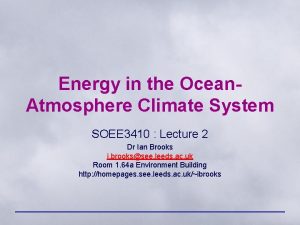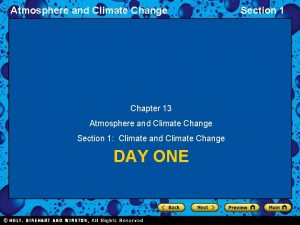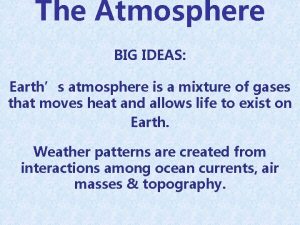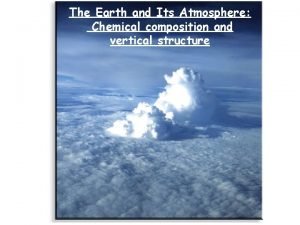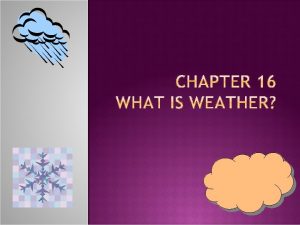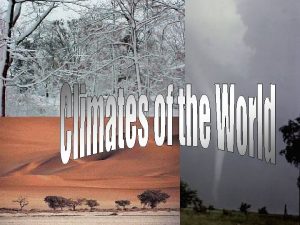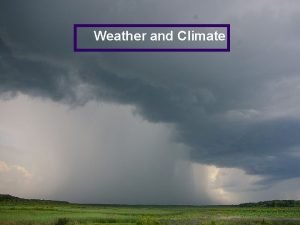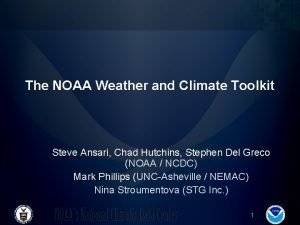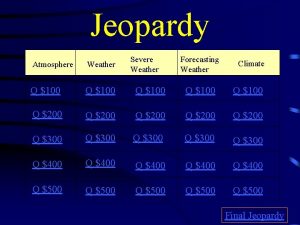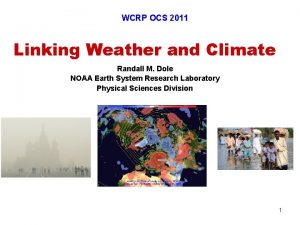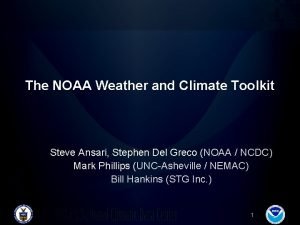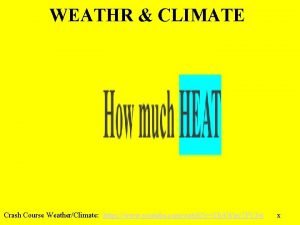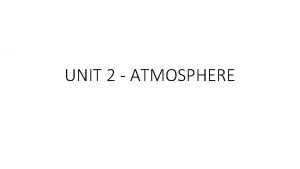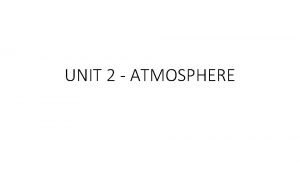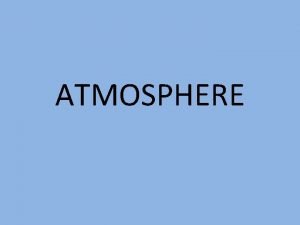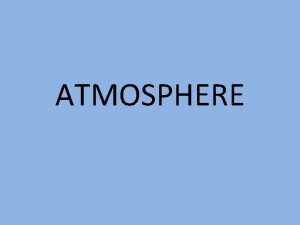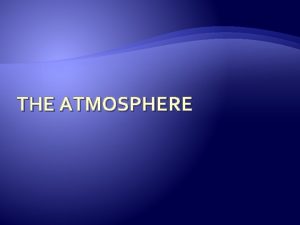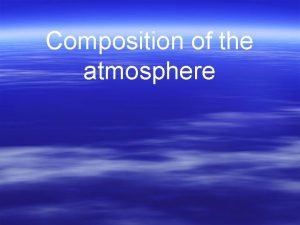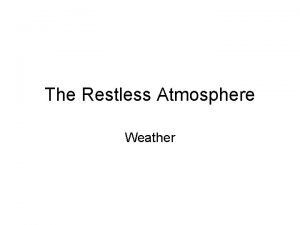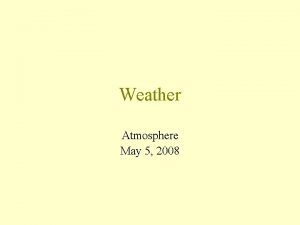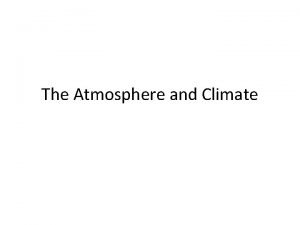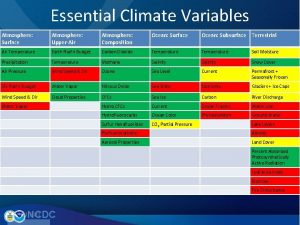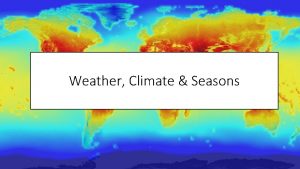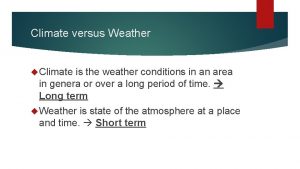Weather versus Climate Composition of the Atmosphere Weather

















- Slides: 17

Weather versus Climate Composition of the Atmosphere Weather - the state of the atmosphere at any given time and place. Constantly changing Climate - weather patterns and averages that have been collected over many years. Climate helps describe a place or region.

Factors that Affect Climate • Atmospheric Circulation – Wind currents affect climate by transferring heat from the tropics to the polar regions

17. 3 Temperature Controls Why Temperatures Vary Some factors other than latitude that exert a strong influence on temperature include: Altitude – cooler temperatures at higher altitudes cloud cover – lower temperature when cloudy (albedo)

17. 3 Temperature Controls Why Temperatures Vary Cloud Cover and Albedo • Albedo is the fraction of total radiation that is reflected by any surface. • Many clouds have a high albedo and therefore reflect back to space a significant portion of the sunlight that strikes them.

Clouds Reflect and Absorb Radiation

20. 1 Air Masses and Weather Air Masses • An air mass is an immense body of air that is characterized by similar temperatures and amounts of moisture at any given altitude. Movement of Air Masses • As it moves, the characteristics of an air mass change and so does the weather in the area over which the air mass moves.

Frigid Canadian Air Mass Moves Southward

20. 1 Air Masses Classifying Air Masses In addition to their overall temperature, air masses are classified according to the surface over which they form.

Air Masses Are Classified by Region

20. 2 Fronts Formation of Fronts When two air masses meet, they form a front, which is a boundary that separates two air masses.

20. 2 Fronts Types of Fronts Warm Fronts • A warm front forms when warm air moves into an area formerly covered by cooler air. Cold Fronts • A cold front forms when cold, dense air moves into a region occupied by warmer air.

Formation of a Warm Front

Formation of a Cold Front

20. 3 Severe Storms Thunderstorms A thunderstorm is a storm that generates lightning and thunder. Thunderstorms frequently produce gusty winds, heavy rain, and hail.

20. 3 Severe Storms Tornadoes are violent windstorms that take the form of a rotation column of air called a vortex.

Formation of a tornado

This is your last power point for the year!! YAY! - - you made it!
 5 oceans
5 oceans Ocean atmosphere and climate
Ocean atmosphere and climate Chapter 13 atmosphere and climate change section 1
Chapter 13 atmosphere and climate change section 1 Chapter 13 atmosphere and climate change
Chapter 13 atmosphere and climate change Ideas about earth atmosphere
Ideas about earth atmosphere Structure of atmosphere diagram
Structure of atmosphere diagram Atmosphere composition
Atmosphere composition Climate change 2014 mitigation of climate change
Climate change 2014 mitigation of climate change High thin white feathery clouds called
High thin white feathery clouds called Factors affecting climate
Factors affecting climate What is the difference between weather and climate
What is the difference between weather and climate World geography today
World geography today Weather and climate toolkit
Weather and climate toolkit Weather and climate jeopardy
Weather and climate jeopardy Conclusion of weather and climate
Conclusion of weather and climate Noaa wct
Noaa wct Weather clothes
Weather clothes Weathr today
Weathr today

